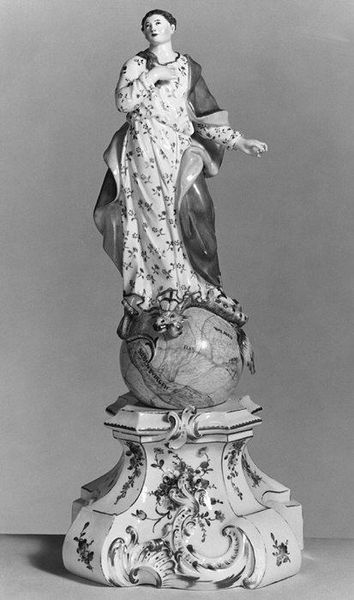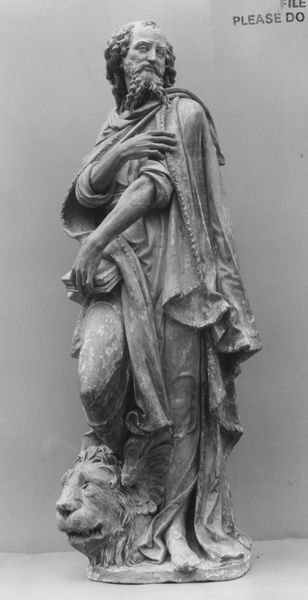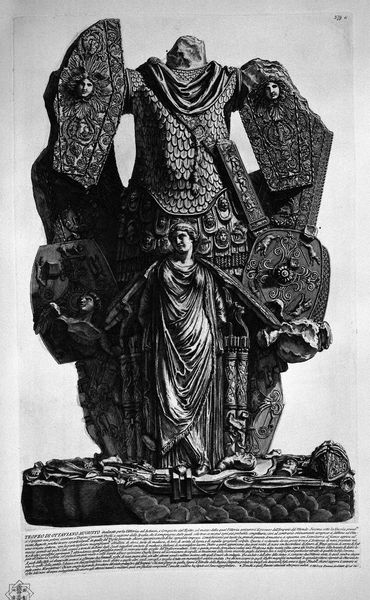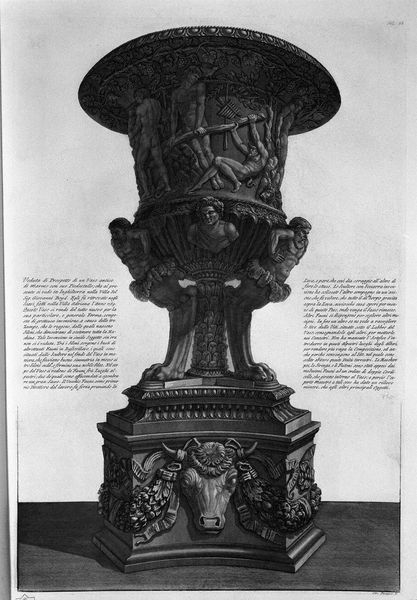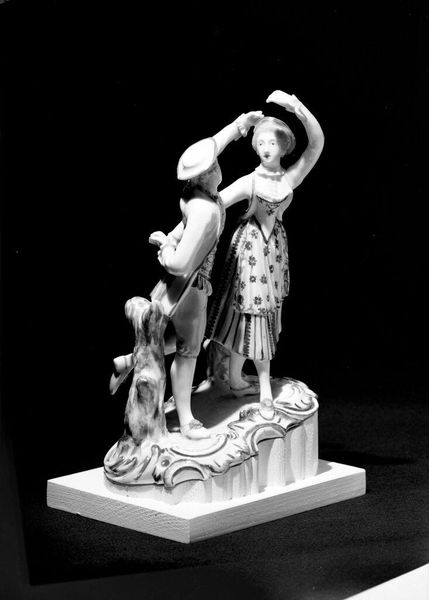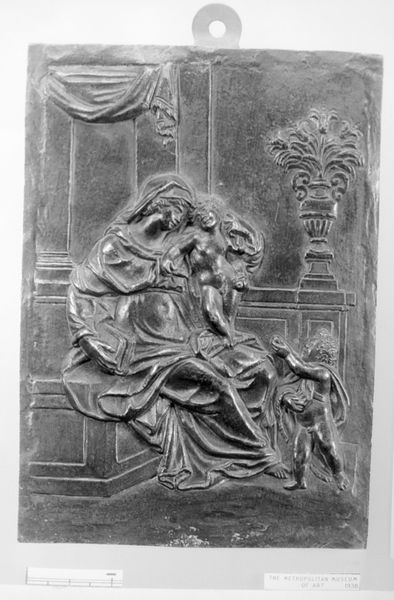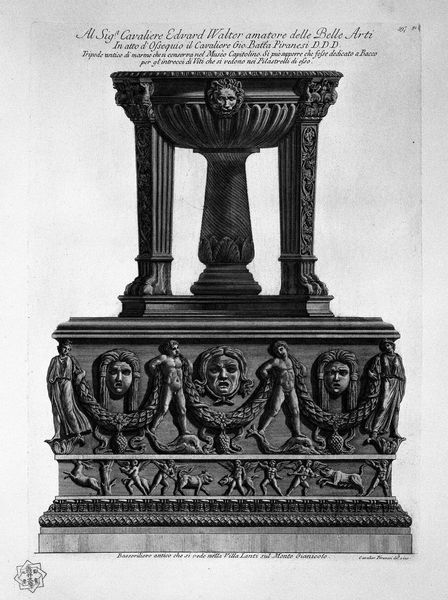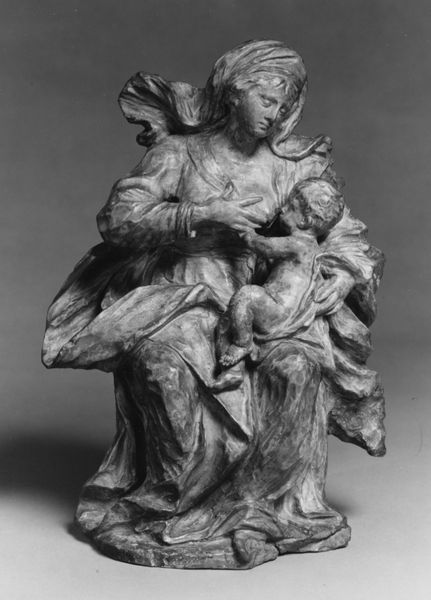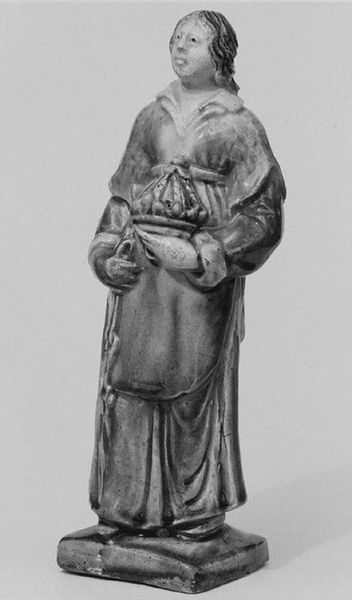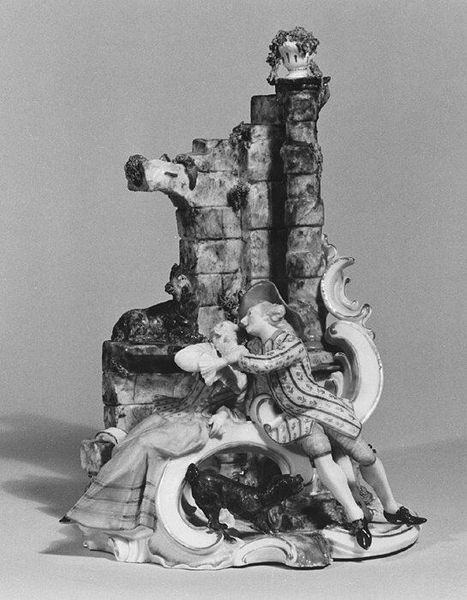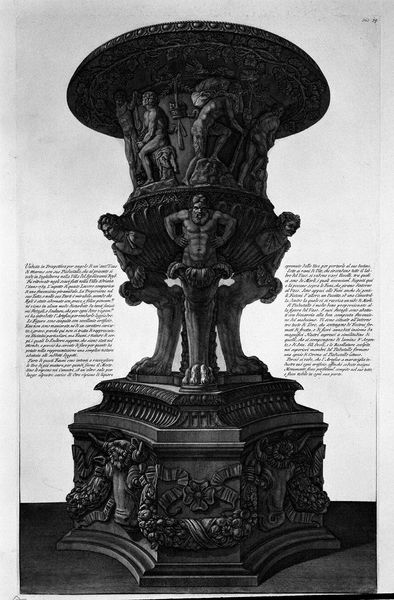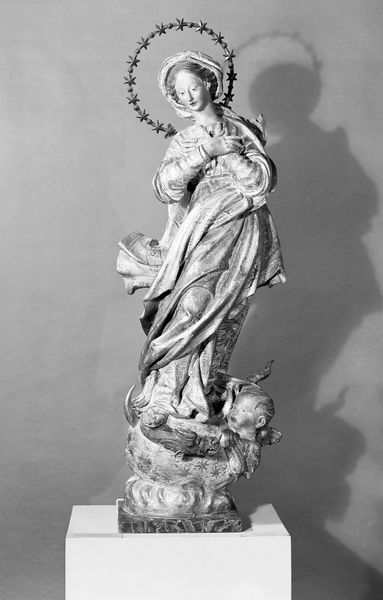
Part of the ancient Via Appia outside the Porta St. Sebastian about three miles
0:00
0:00
drawing, sculpture, charcoal, engraving
#
drawing
#
neoclacissism
#
sculpture
#
classical-realism
#
charcoal drawing
#
geometric
#
sculpture
#
charcoal
#
history-painting
#
engraving
Copyright: Public domain
Curator: This arresting image is by Giovanni Battista Piranesi; its full title is Part of the ancient Via Appia outside the Porta St. Sebastian about three miles. Piranesi was an engraver, so what we're seeing is not the Appian Way itself, but his representation of a portion of the ancient Roman road. Editor: My first impression is of ruins, certainly, but less about the open road and more a monumental, claustrophobic heap. It feels burdened and mournful. Curator: Piranesi was deeply interested in the layered histories embedded in classical ruins. Notice how he depicts this section not just as architecture, but as a chaotic accumulation of fragments. The image is so meticulously rendered, one might feel immersed. Do you feel like you could be physically standing right next to it? Editor: Ironically, no. While there’s an incredible tactile quality conveyed through the detail, especially in the textures, the sheer volume of fragments makes it feel more like an artifice than a believable place. It reads as meticulously constructed labor of mark-making. You can feel the effort involved in the reproduction itself. Curator: Interesting point. Look at the strategic use of light and shadow to emphasize specific elements. These aren’t arbitrary, they draw our eye to what would’ve been symbolic details within the imperial project, signs and images from another time. Think about how powerful these symbols were at the time versus how scattered and broken they are presented to the viewer here, and their power to move you might return. Editor: Even in ruin, though, there’s something about that layered materiality that’s powerful. Each fragmented layer speaks to both design and process. The material residue suggests a continuous labor…one feels the movement of history itself acting as the force, accumulating atop each new component. The ruin feels active to me, perpetually being worked on. Curator: So perhaps we see Piranesi as a cultural archeologist digging beneath the surface of Roman splendor to unearth meaning. Editor: Or maybe, even more fundamentally, Piranesi has laid bare a material reality… exposing not only Roman iconography, but also the conditions of its own making— and, in its ruins, the future conditions of everything else ever built. Curator: A provocative interpretation to be sure. A final, powerful glimpse into the past! Editor: Absolutely. There’s an endless story inscribed in the materials.
Comments
No comments
Be the first to comment and join the conversation on the ultimate creative platform.
